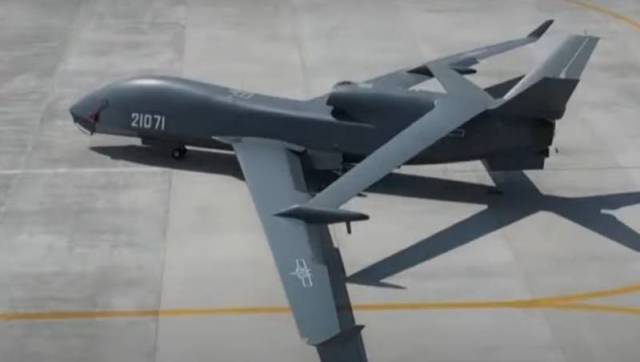
Image source: topwar.ru
Operated by the Naval Forces of the People's Liberation Army of China (PLA), the WZ-7 drone was built by Guizhou Aircraft Corporation. His external analysis showed that the initial version of the WZ-7 for the Air Force is similar to the role of the Northrop Grumman RQ-4 Global Hawk of the US Air Force, a long-range drone capable of providing reconnaissance, surveillance and reconnaissance.
On January 1, the Japanese Ministry of Defense confirmed that the Chinese WZ-7 passed through the Miyako Strait and conducted operations outside the first island chain. The Southwestern Air Defense Forces of the Japanese Air Force raised the F-15J to intercept and monitor the drone when it entered the identification zone of the Japanese air defense. In addition, this was the first time that Japanese forces attempted to respond to such an aerial object.
The marine version of the WZ-7 is somewhat similar to the MQ-4C Triton of the US Navy, the marine version of the RQ-4, focused on broad maritime surveillance. Since long-range drones require a special communication channel beyond the line of sight, therefore it makes sense to equip its upper part with a material transmitting waves so that the antenna works with the satellite.
ESM antennas were built into the base of the wing to intercept messages or radar signatures from surface warships to perform the function of direction finding and passive determination of their location.
For many years, China has been trying to create its own means of countering US carrier strike groups by introducing various anti-ship means, including DF-21D anti-ship ballistic missiles, which the Chinese media often called the "Carrier Killer". Like any other weapon, in order to hit a target, you first need to detect it.
This variant of the WZ-7 can use its radar and ESM kit to complement the existing Chinese maritime ISR network as an important part of the entire "Kill Chain" ecosystem, with an emphasis on conducting long-range reconnaissance (detection), transmitting a tactical sea picture and raising awareness of the situation, as well as providing up-to-date targeting information to anti-ship units.
